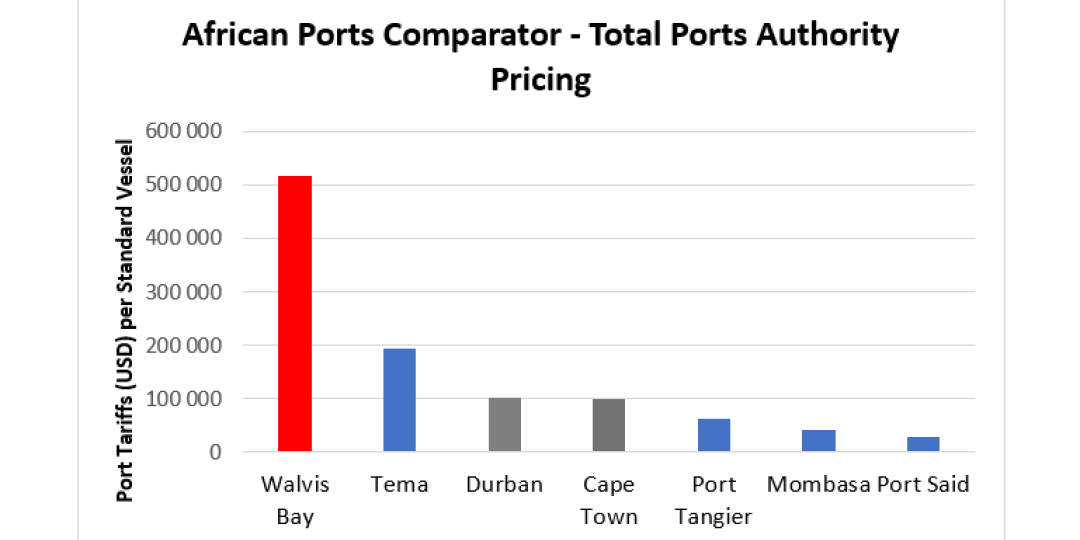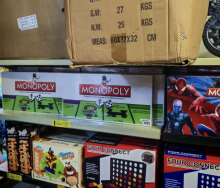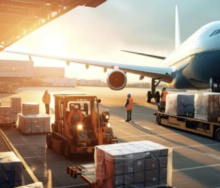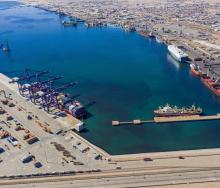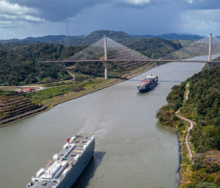A pricing study by the South African Ports Regulator has found that Namibia's Port of Walvis Bay, widely perceived as one of the biggest competitors to other ports in the region, is 427% more expensive than its immediate regional rival, Cape Town.
In a report titled The Namibian economy and the logistics sector, independent analyst Rainer Ritter says, "Currently, exporters of Namibia prefer to transport their containers to Cape Town port to reduce shipping costs."
The study focused on container handling and, as such, compared major South African ports with international and African ports.
By looking at terminal handling charges, cargo dues, and marine charges, it found serious cost concerns for SA's ports, Ritter points out.
These include: not being competitive with handling costs, being 55% more expensive than the global average of the sample size used in the Regulator's study, and cargo dues per port being about 166% more expensive than elsewhere.
The study also found that SA's marine charges are 5% lower than the sample-size average.
Accordingly, Ritter says the Regulator recommends that SA ports "must lower their tariffs to be competitive, compared to international ports."
This is especially the case with handling costs and cargo dues, pricing dynamics that generally makeup 66% and 29% of total container charges.
Ritter says that although African ports are often shielded by exchange rate losses, “high costs must be lowered to reduce the costs in the value chains, especially for exports."
It is against this cost context that his report says Walvis Bay is well over 400% more expensive than Cape Town.
Besides persistent congestion and weather-bound issues burdening Durban and Cape Town, Ritter says SA's terminals are putting up a determined price fight.
"South Africa has been decreasing its container handling tariffs since 2014, and Durban intends to lower its tariffs to about $25 000 per standard vessel by 2025."
A graph included in the report showing "ports tariffs per standard vessel" clearly illustrates that Walvis Bay is significantly costlier than ports like Tema (Ghana), Mombasa (Kenya), Tangier (Morocco), and Port Said (Egypt).
According to the graph, Walvis Bay is well above the average cost of $131,641 per vessel.
"Walvis Bay is by far the most expensive port" in the Regulator's comparator study, Ritter says.
Interestingly, the Moroccan and Egyptian ports are the only African ports in the Container Port Performance Index (CPPI), compiled by the World Bank and S&P Global Market Intelligence and released earlier this month, that made it into the CPPI's Top 10 of best-performing ports.
Out of the 348 ports that provided container-handling data for the CPPI, Walvis Bay is listed at 293, well ahead of Durban (364) and Cape Town (365).
Logistics executives in Namibia generally believe it is the edge of efficiency that they have over South African ports that will ultimately drive more shippers towards Walvis Bay.
But Ritter's report suggests otherwise, as freight forwarders in Namibia seem to be looking south for more affordability for their clients.
